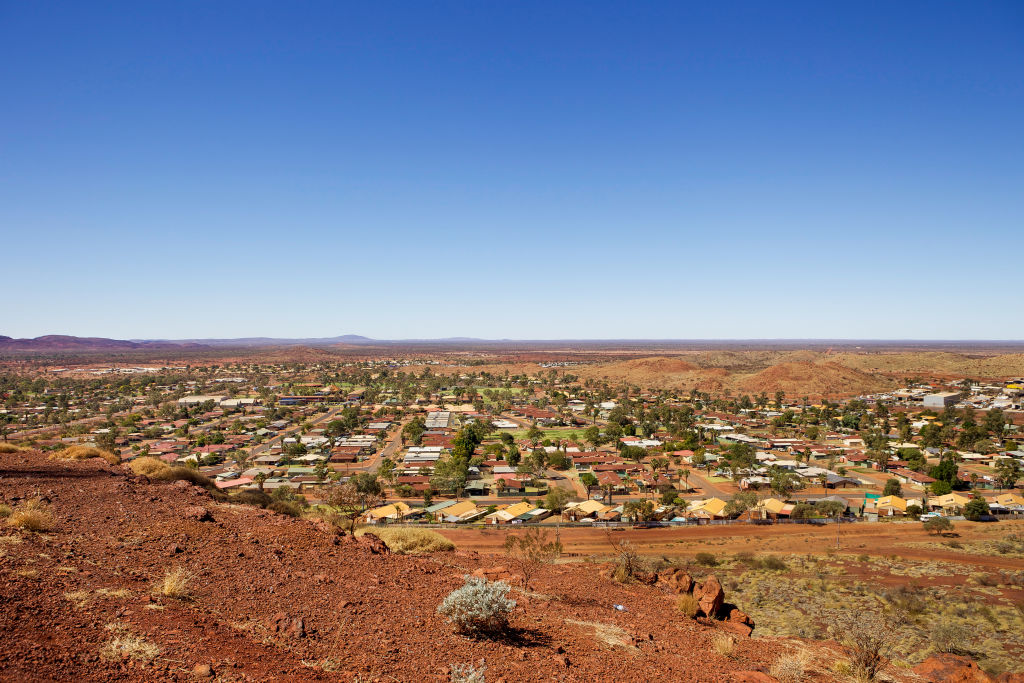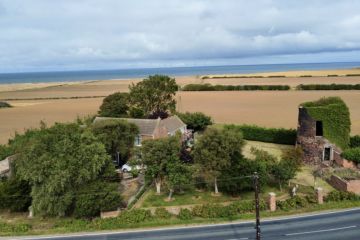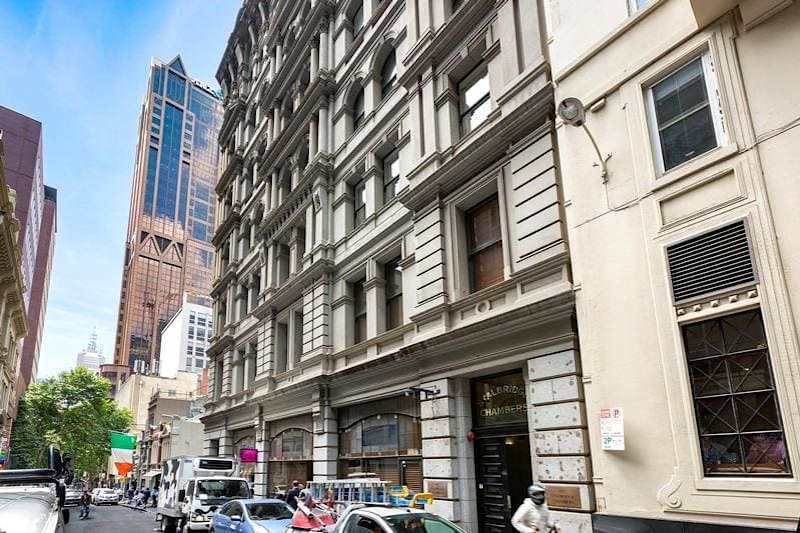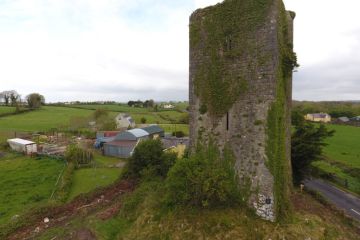The remarkable recovery of property markets in Australian mining towns

Property markets in mining towns around Australia have begun to record a strong recovery in the past year, which experts are saying could be the beginning of the next boom.
New Domain figures have revealed both house prices and asking rents in the mining towns have chalked up remarkable double-digit growth in the year ending June 2020.
It comes as local iron ore production picked up pace in the past year and has only accelerated, while supply from Brazil, where the health situation is much worse, has been weak with the iron ore price hovering at high levels about $US100 a tonne for about two months.
In Western Australia, Karratha in the Pilbara, 1575 kilometres north of Perth, topped the state’s house price growth, rising a whopping 22.9 per cent to a median of $442,500.
It was followed by Port Hedland, the second-largest town in the Pilbara and 1322 kilometres north of Perth, which saw house prices rise 12 per cent to a median of $280,000.
Curtin University economics professor Steven Rowley said there were a range of issues contributing to the recovery but the resources sector picking up again and a changing workforce were key.
“Iron ore price is very strong at the moment so the resource sector is going well and the slight expansion of the workforce,” Professor Rowley said.
But the nature of “FiFo” – fly in, fly out – work has also changed since the last mining boom, according to Professor Rowley, with the number of weeks rostered on the job doubling from two to four.
“Some of them are family unfriendly so again from a life-work balance, people are making the decision to stay in these towns,” he said.
COVID-19 has given even more reason for some to stay put rather than being a transient community, he said, as people tried to minimise the risk of losing work due to changing travel restrictions.
But the government had also invested in some towns since the last mining boom and bust, as places such as Karratha were quite different from a decade ago.
“We have seen an improvement in amenities. It’s a much nicer place to stay in than 2007, putting greater pressure on existing stock,” he said.
“The Western Australian government has given grants for people to stay there and there has also been a cut to land prices to make it more affordable for people to live there.
“Mining companies want people to stay locally as well … workers tend to be happier when they’re living where they work,” he said. “A happy worker is a productive worker. I think that’s one of the key drivers, there’s more demand to live and work in these areas.”
But as the resources sector has gained momentum and these towns have recorded an influx of workers as a result, it has put pressure on the limited and existing stock.
Western Australia
Rental prices in many suburbs of Karratha have recorded whopping double-digit growth, with Dampier house rents increasing 22.7 per cent to a median of $730 a week in the past year.
House rents in Millars Well, another Karratha suburb, rose 37.5 per cent to $550.
Peard Real Estate Karratha selling agent Peter Peard said the property market was picking up pace with demand outstripping the amount of rentals on the market.
“One [friend] is renting a one-bedroom studio for $550 and he has been told his rent will go up to $775,”
“I spoke to a local valuer the other day and he said if you bought a house at the bottom of the market in 2017 you would have near double your money now … in the boom days, six to seven years ago, a million-dollar house dropped down to $500,000 now and it’s back up to $800,000,” Mr Peard said.
He had observed that the town has evolved since the first boom and believed that it has encouraged more people to relocate.
“It’s quite a liveable town. I’m walking down the street and it’s got all those cool Melbourne cafes,” he said, adding that it was a 10-minute wait for the cup of coffee he ordered.
Ray White Karratha principal Richard Naulls said increased demand was one reason for the strong growth in rentals but legislative changes to have longer leases and fewer rent hikes was another.
“Most of our leases are 12 months minimum and up to 24 months … they’re now playing catch up on,” he said. “I think it’s a good legislation change for the ongoing stability for the town.
“Even through this COVID-19 period we leased 28 properties since April. We were actually closed that month with a skeleton staff, working from home and leasing online via virtual tours.”
But with rental increases in the order of 22 to 38 per cent, many families are opting to buy into the local property market instead, Mr Knaulls said.
“If you look at the peak of the market was almost 2012, we had a peak of about $990,000 median sale price and $2500 was the weekly rent,” he said. “It bottomed out in 2017 by 65 per cent.”
In Port Hedland, the rental market is just as tight, according to Hedland First National selling agent Rick Hockey, as mining companies such as BHP, Fortescue Metals and Gina Rinehart’s Roy Hill have all flagged their intention to increase their exports from the port town.
“There’s only 60 or 70 properties available for leasing,” Mr Hockey said. “I’ve been here for 40 years and I’ve never seen it quite like that. It’s very tight at the moment.
“The mining industry has not missed a beat. If anything, it’s getting stronger,” he said. “Because Brazil is having trouble with COVID-19, we’ve been pumping out a lot of iron ore.
“It will take a few years for all that to happen. It just goes to show they’re getting ready to ramp up,” he said.
Queensland
It’s a similar story in Queensland, where the local regional council area of Isaac, which has kilometres of coalfields, recorded a 32.5 per cent increase to a median of $275,000 in the past year, too.
Rentals in many of the mining towns also rose in turn with Dysart, 933 kilometres from Brisbane and the service centre for the nearby Norwich Park coal mine, saw house rents increase 26.3 per cent to $240.
Moranbah, 788 kilometres north-west of Brisbane and which services several nearby coal mines, saw house rents rise 21.2 per cent to $400.
LJ Hooker Mackay Group Principal Tara Smyth said it was simply a matter of supply and demand.
“What we predominantly saw in the last seven years, we had a high rate of forced sales and mortgagee in possessions,” Ms Smyth said. “We’ve had a high supply in both marketplaces [Dysart and Moranbah].”
She said that had been flipped on its head in the past 12 months: “What gets created is low supply and high demand, which effectively pushes the pricing up. You can have 10 to 15 [rental] applications on any property. It creates competition.”
Ms Smyth said while investors had not returned in strong numbers just yet, many locals were trying to enter the property market.
“We have seen banks not ask for a high LVR so they can afford to put down a deposit on the properties. I would suggest this is my second cycle in the area.”
Raine & Horne Moranbah selling agent Tabitha Camilleri said the rental market is almost non-existent.
“Raine & Horne has not listings for rentals in Dysart or Moranbah at the moment,” Ms Camilleri said. “There’s lots happening. We won’t know until another year’s time if mining will be that strong because of COVID-19 as you know mining fluctuates with the economy.”
We recommend
States
Capital Cities
Capital Cities - Rentals
Popular Areas
Allhomes
More







